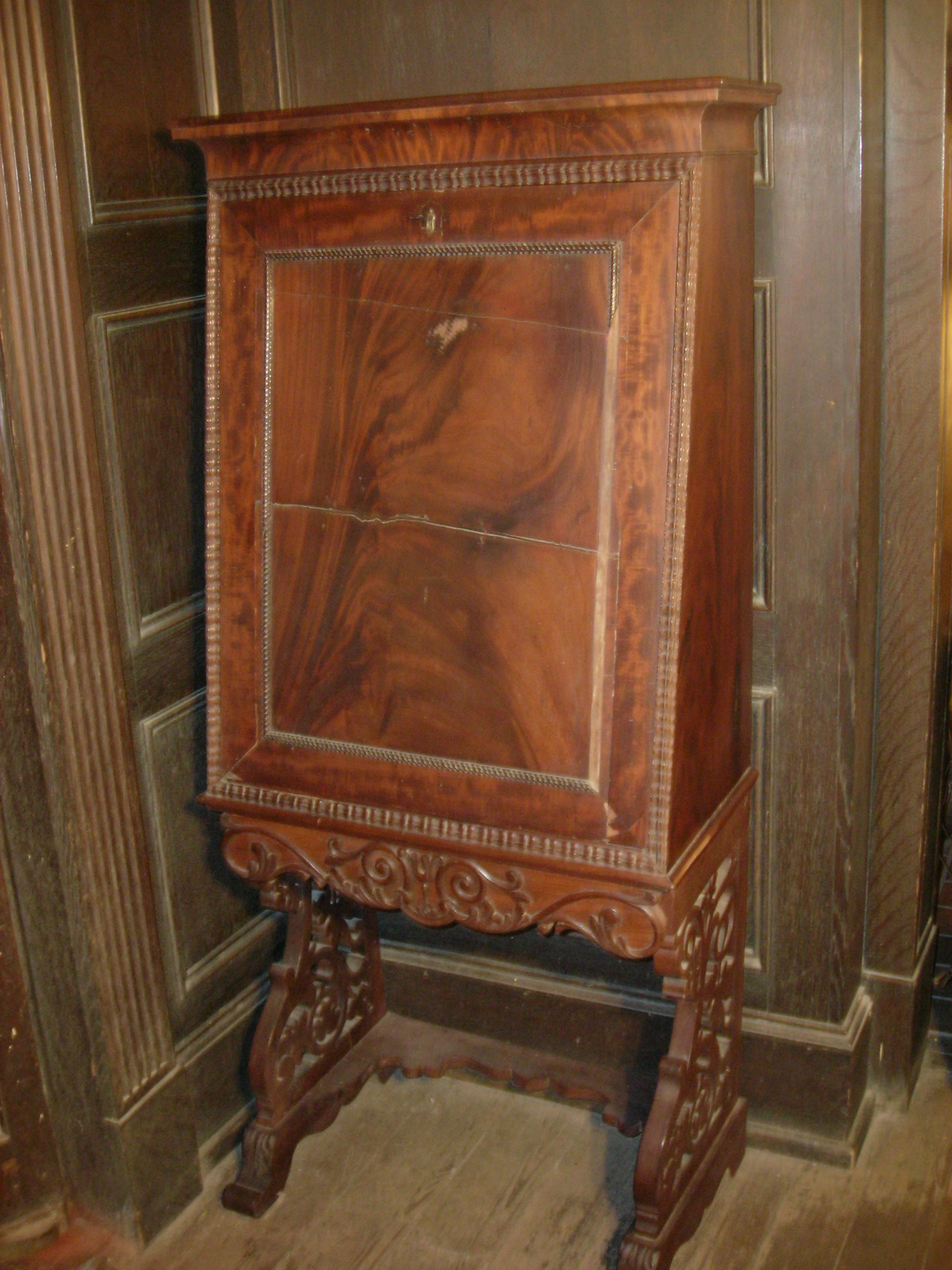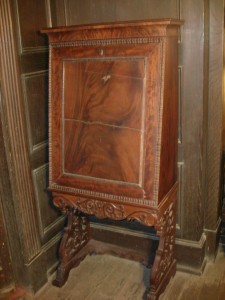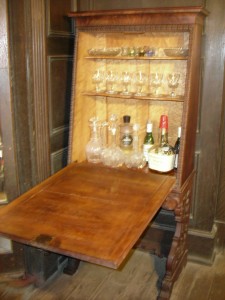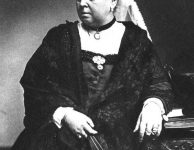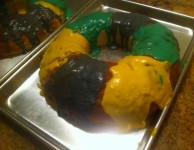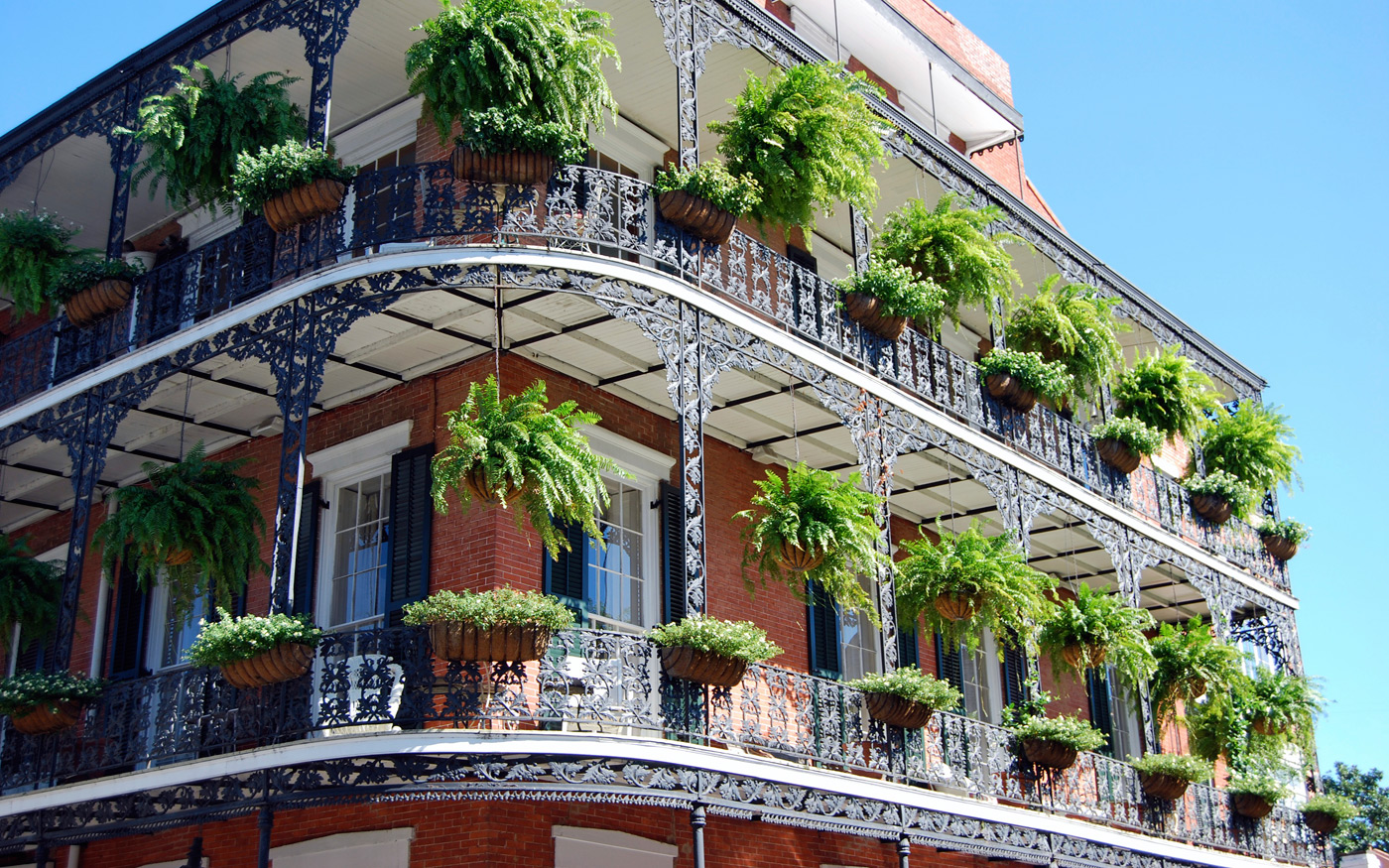New Year’s: Will You Go to Your Cellarette?
Mary Reporting. What more fitting day than New Year’s Eve to discuss the cellarette, that piece of furniture once found in American homes to house adult libations under lock and key. Today, we might grab a bottle of champagne from the back of the fridge rather than opening an elegant mahogany or burled walnut cabinet.
The cellarette dates from 15th century Europe where tavern keepers employed them in public houses to keep liquor locked up. In Colonial America these freestanding cabinets became common in the dining rooms of private homes where the family stored wine, whiskey, Scotch, brandy and rye in them.
Their use in French New Orleans with the population’s propensity to enjoy all sorts of spirits was common. My grandfather’s cellarette, pictured here, was always a fixture in the dining room of the family home. At some point years ago, someone moved the liquor to the top of the sideboard across the room—no doubt to avoid fumbling with a key before having a drink of whiskey or brandy.
Once the cellarette ceased to hold spirits, it became a catch-all cabinet for clutter. When I turned the key last week, I found old letters, broken glassware, musty paper and cloth cocktail napkins and an old but empty bottle of Cabernet Sauvignon.
In our novels, cellarettes are a prominent fixture in every home—in dining rooms, back parlors, gentleman’s libraries and even ladies’ sitting rooms. Patrick Collins, owner of Collins Cotton Factorage and heir to Collins Distillery back in Ireland, has a cellarette in his library.
“Uncle Patrick rose and went to pour himself a brandy. William, rolling up his shirt sleeves, joined him at the mahogany cellarette and poured himself a glass of Collins Irish Whiskey.”
Across town in the French Quarter, Renee and her Aunt Sophie store sherry in their cellarette in the back parlor, the more casual family sitting room. They enjoy a glass or two before dinner each evening, which spurs conversation about the events of the day and the intrigues in the city. One evening on a dare from William, Renee pours herself a brandy:
“He stood in front of the fire while Renee poured drinks at the cellarette. First she served Aunt Sophie, who reached for the one glass of sherry from the tray, then William, who took one of the brandy snifters. She placed the tray on the table beside her aunt’s chair and, in plain view, picked up the second snifter.”
Vespasian Colville, the heaviest imbiber and a well-known rake in the Vieux Carré Series, makes the mistake of mixing a voodoo love potion with sherry stored in his cellarette in his library. It’s a potion destined to secure a lady’s love, but not the love of the lady he hoped to woo.
“He set the little bottle on his desk and stared at it for some time. What these voodoo priestesses mixed up—herbs, hot peppers, animal hearts, bone chips, graveyard dirt, even gun powder, he’d heard—these potions worked. … He crossed the room to his cellarette, picked up the crystal decanter containing no more than a half cup of sherry, and poured the love potion into it. He twirled the bottle to mix the liquids together, took a sniff and groaned, then returned the decanter to the cabinet.

